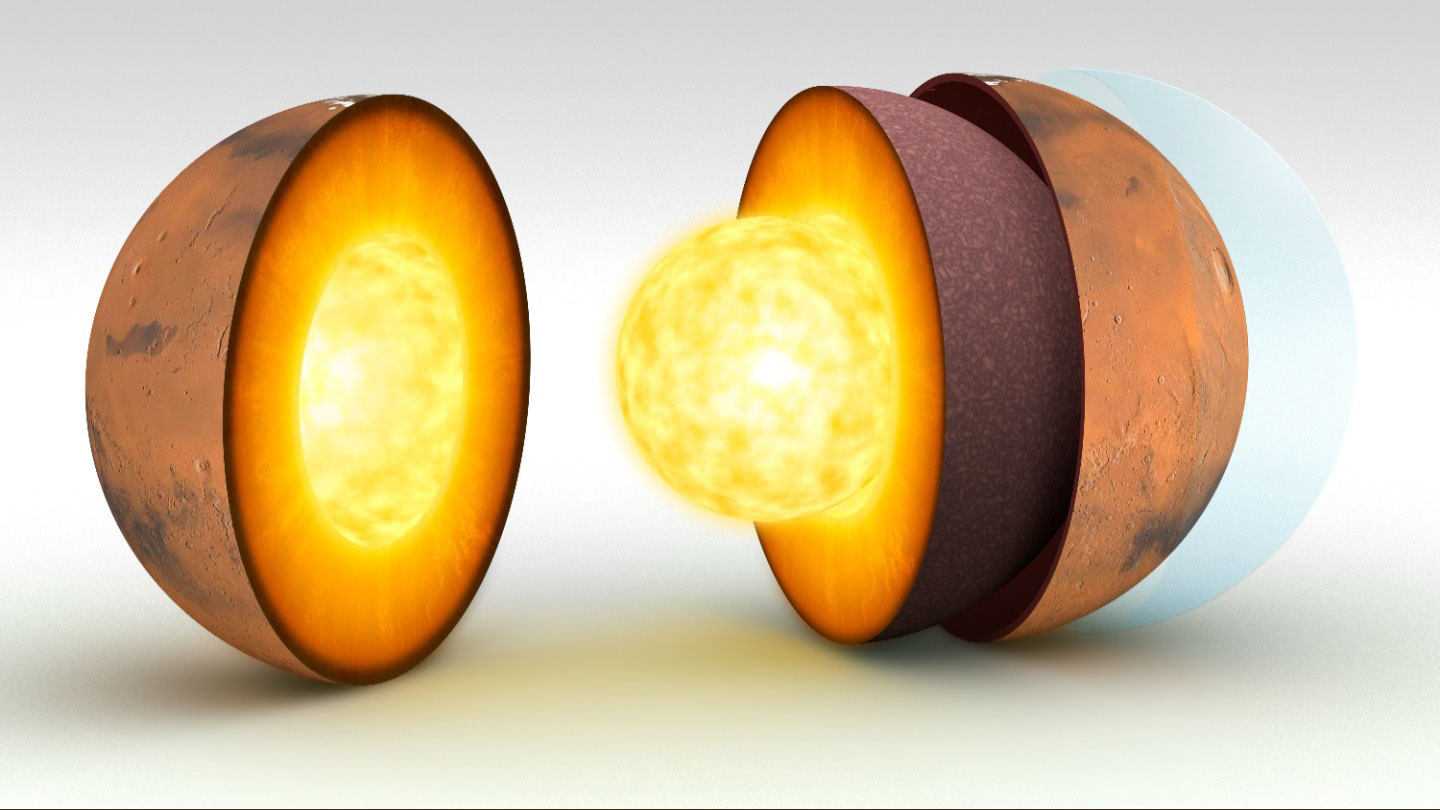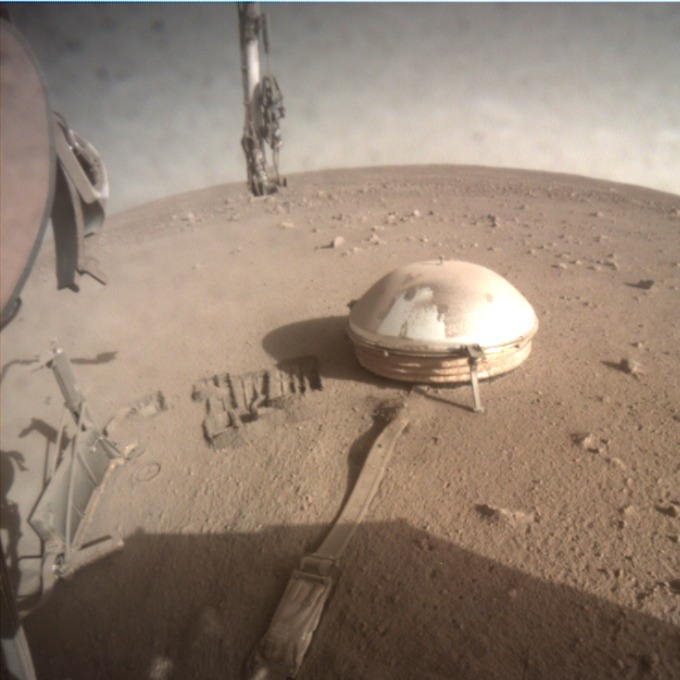Seismic waves crossing Mars’ core reveal details of the Crimson Planet’s heart


Mars’ heart is about the size of our moon, and virtually 2 times as dense. Or so suggest the initially noticed rumblings from a Marsquake and meteorite impression to cross the Crimson Planet’s heart, scientists report April 24 in Proceedings of the Nationwide Academy of Sciences. The penetrative reverberations permitted researchers to refine estimates of the core’s size, density and composition (SN: 7/22/21).
“Nobody’s at any time observed in advance of a seismic wave going through [Mars’] core,” suggests seismologist Jessica Irving from the University of Bristol in England. “We waited for extra than 900 times for one quake on the farside,” she suggests. Then “24 days later on, there was … a meteorite impression.”

Each had been captured by NASA’s Perception lander, which monitored seismic activity on Mars for four many years, up till December 2022 (SN: 12/20/22). In excess of its 1,480-day career, the lander captured the quivers of in excess of 1,000 Marsquakes and a handful of impacts (SN: 11/3/22). But in all that time, it detected just two rumblings on the planet’s farside.
Examining the core-crossing seismicity from the two gatherings, Irving and her colleagues observed that Mars’ coronary heart has a radius of 1,780 to 1,810 kilometers with a density of about 6,200 kilograms for every cubic meter. That radius is slightly scaled-down than earlier estimated, and about 50 % that of the mixed levels of Earth’s heart (SN: 3/16/23). The cores of both planets comprise about 50 % of their overall thickness.
Also, the scientists inferred that Mars’ core is mainly designed of a liquid iron alloy, with sulfur producing up about 15 per cent of its mass. A smattering of hydrogen, oxygen and carbon together comprise about 5 per cent. The results about align with some earlier analyses of Martian meteorite compositions.
| Cookie | Duration | Description |
|---|---|---|
| cookielawinfo-checkbox-analytics | 11 months | This cookie is set by GDPR Cookie Consent plugin. The cookie is used to store the user consent for the cookies in the category "Analytics". |
| cookielawinfo-checkbox-functional | 11 months | The cookie is set by GDPR cookie consent to record the user consent for the cookies in the category "Functional". |
| cookielawinfo-checkbox-necessary | 11 months | This cookie is set by GDPR Cookie Consent plugin. The cookies is used to store the user consent for the cookies in the category "Necessary". |
| cookielawinfo-checkbox-others | 11 months | This cookie is set by GDPR Cookie Consent plugin. The cookie is used to store the user consent for the cookies in the category "Other. |
| cookielawinfo-checkbox-performance | 11 months | This cookie is set by GDPR Cookie Consent plugin. The cookie is used to store the user consent for the cookies in the category "Performance". |
| viewed_cookie_policy | 11 months | The cookie is set by the GDPR Cookie Consent plugin and is used to store whether or not user has consented to the use of cookies. It does not store any personal data. |